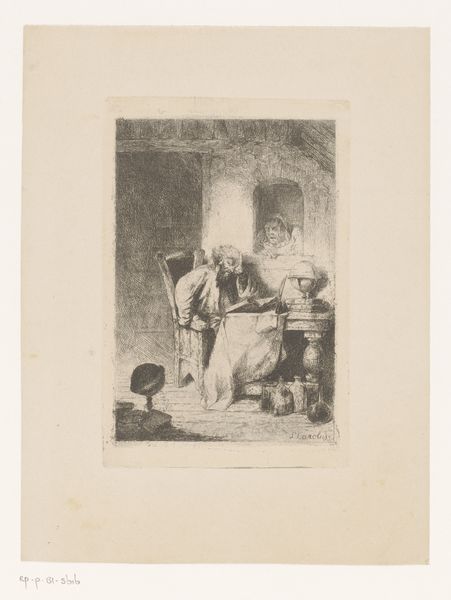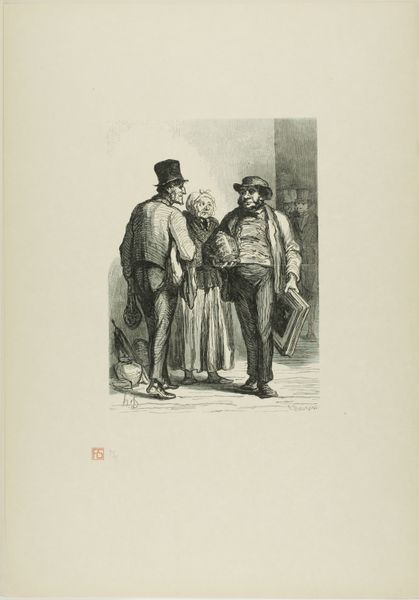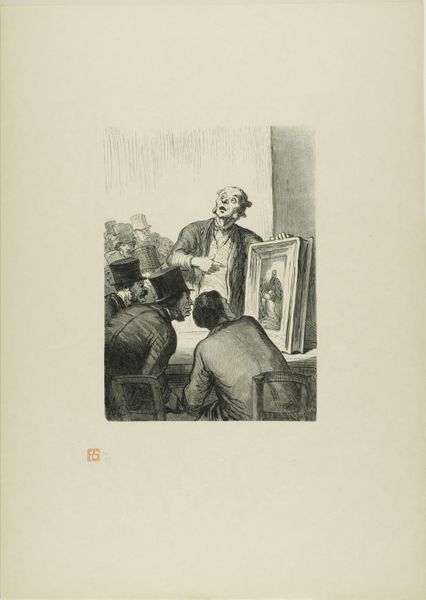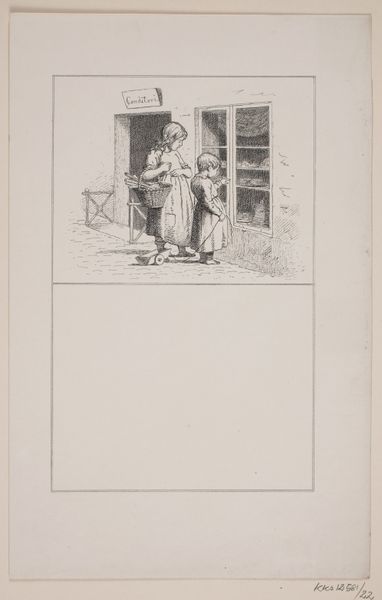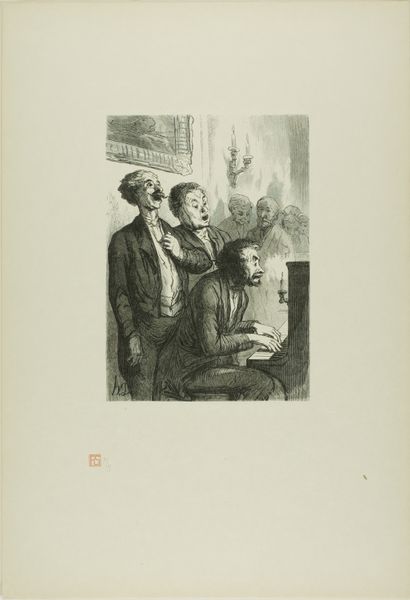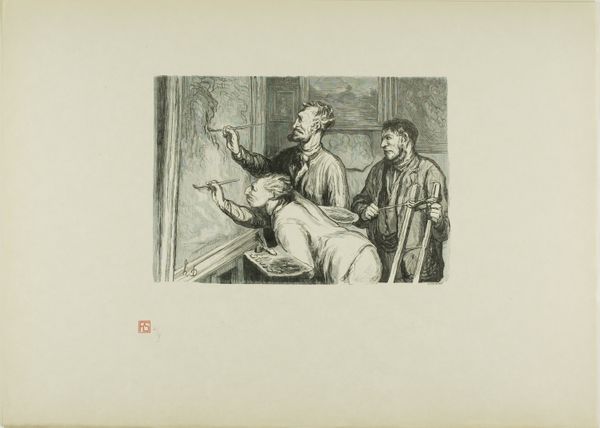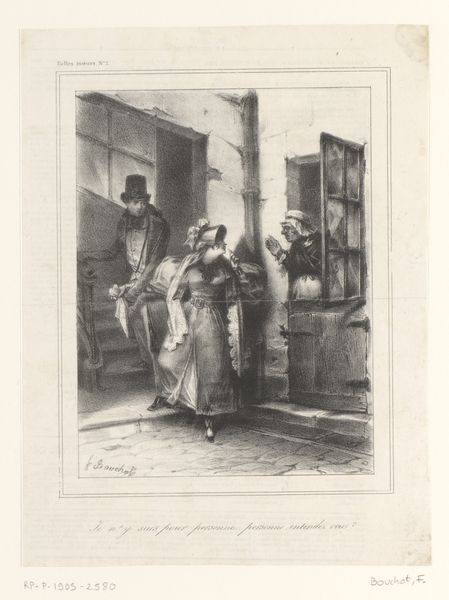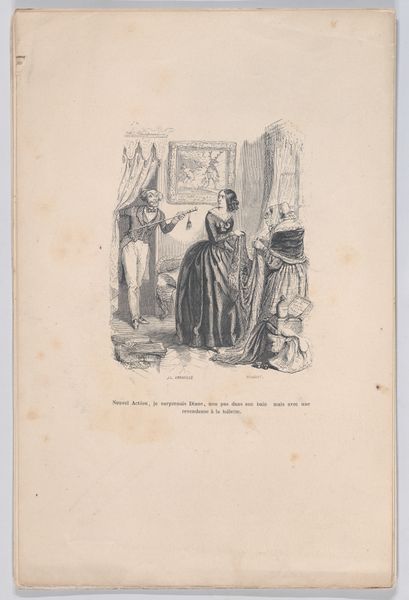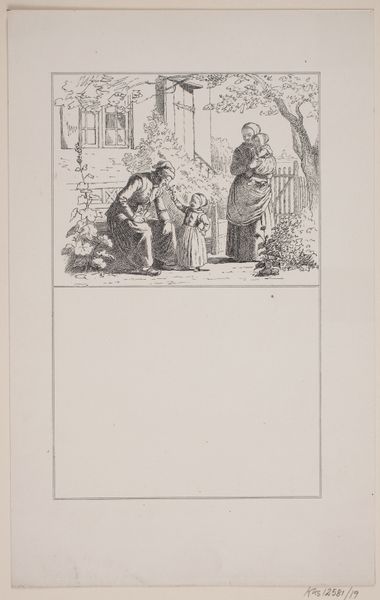
drawing, print, paper, engraving
#
portrait
#
drawing
# print
#
pencil sketch
#
paper
#
genre-painting
#
engraving
Dimensions: 225 × 160 mm (image); 463 × 323 mm (sheet)
Copyright: Public Domain
Editor: We're looking at *The Street Singers*, an engraving by Charles Maurand, likely from between 1862 and 1920. The cross-hatching creates so much texture, it almost feels like I can hear the music! What story do you think this piece is telling? Curator: Well, think about the historical context. Urban life in the late 19th century was transforming rapidly. Street musicians were a common sight, often representing both a source of entertainment and a symbol of poverty. Editor: So, this isn't just a charming scene, it's commentary? Curator: Absolutely. Maurand captures a particular segment of society. What do you notice about their clothing and expressions? They're not exactly joyful, are they? Editor: No, they look pretty weary. It makes you wonder about their day to day existence. So the print, in a way, makes them visible. It gives them a certain recognition that society at the time didn't always offer. Curator: Exactly. Prints, unlike unique paintings, democratized art. They made images like this accessible to a broader public. What impact do you think this wider distribution had? Editor: It could generate sympathy or… something else. Did the artist perhaps, want to bring attention to these societal conditions, maybe encourage some sort of action or response? Curator: Perhaps, though the meaning isn’t fixed. The print’s meaning shifted depending on who saw it and the social forces at play. But by understanding those forces, we can understand the print more completely. Editor: It is more complicated than I first assumed. It’s less about their singing, more about society, in that street corner? Curator: Precisely. These artworks are always doing social work.
Comments
No comments
Be the first to comment and join the conversation on the ultimate creative platform.
